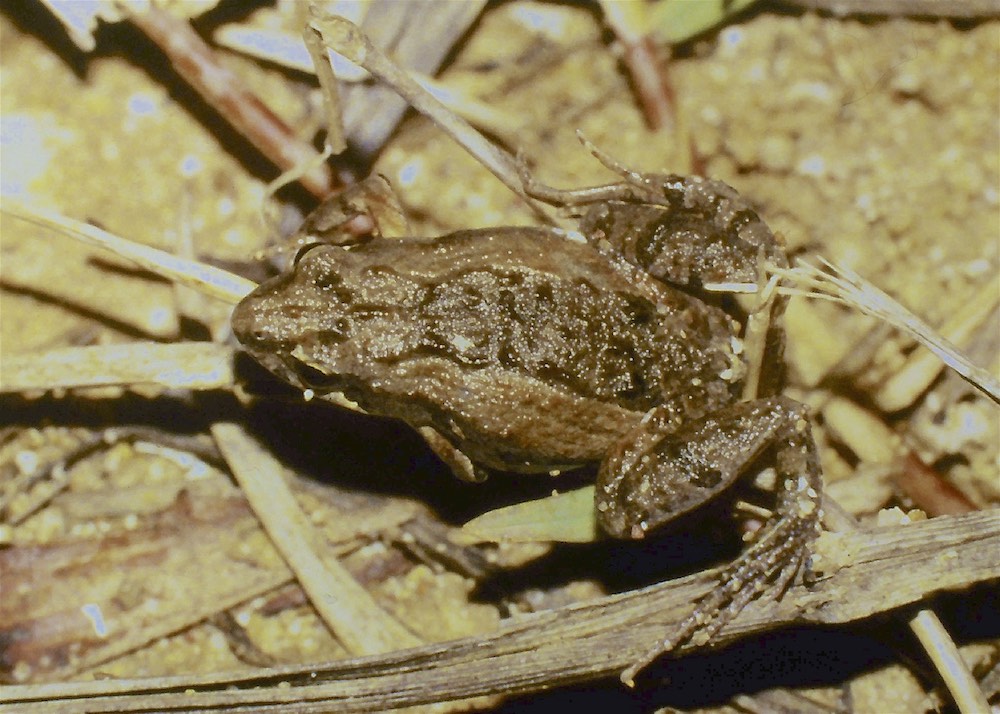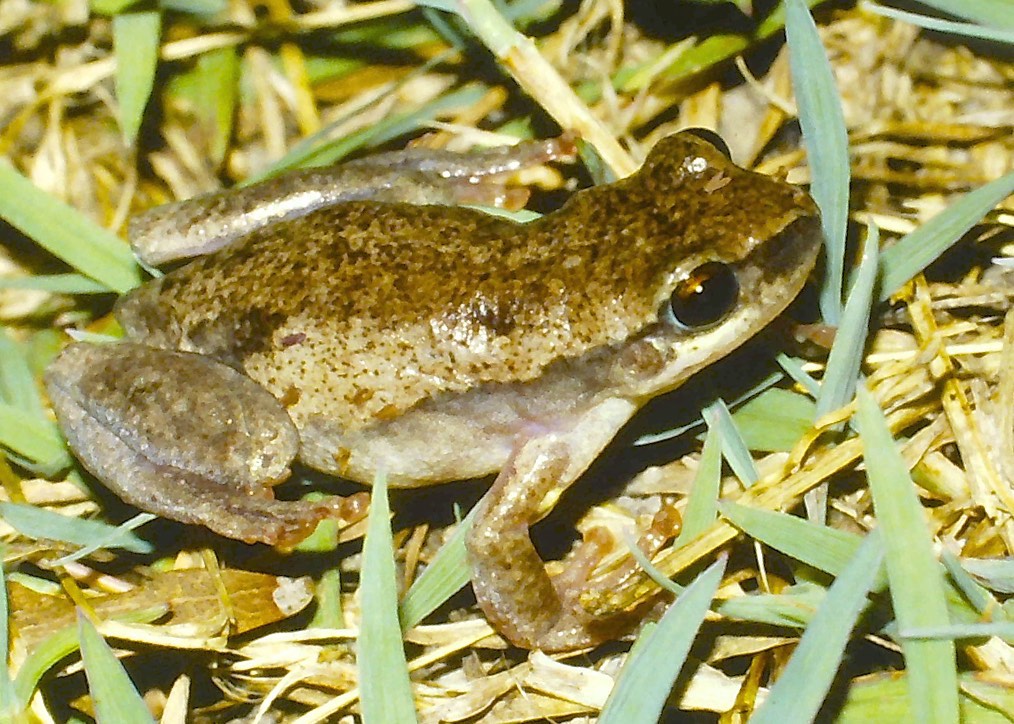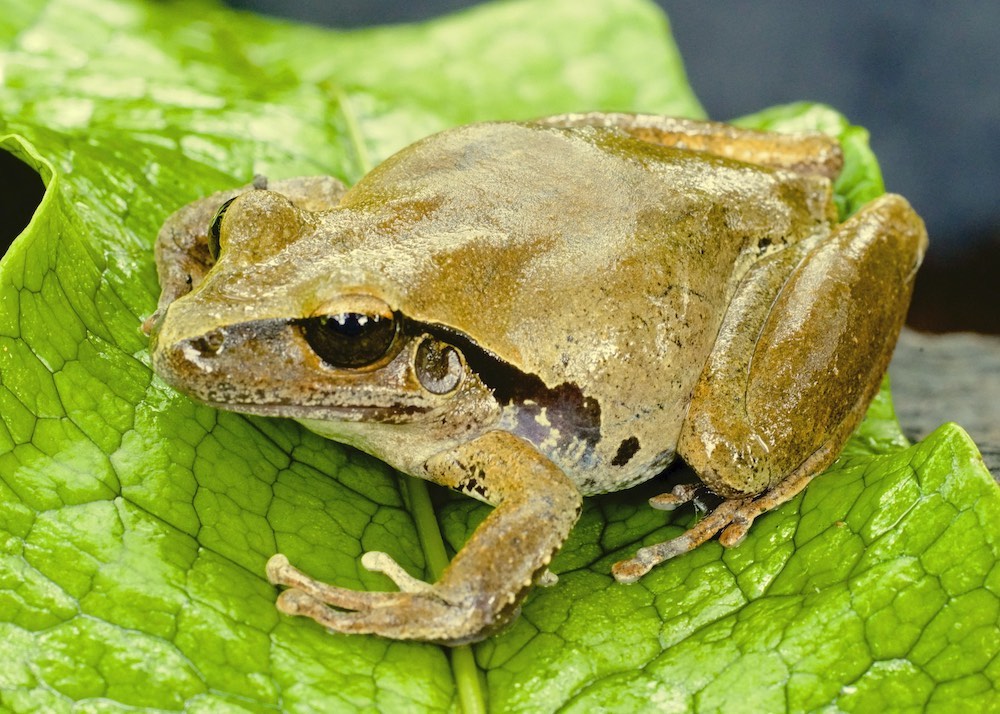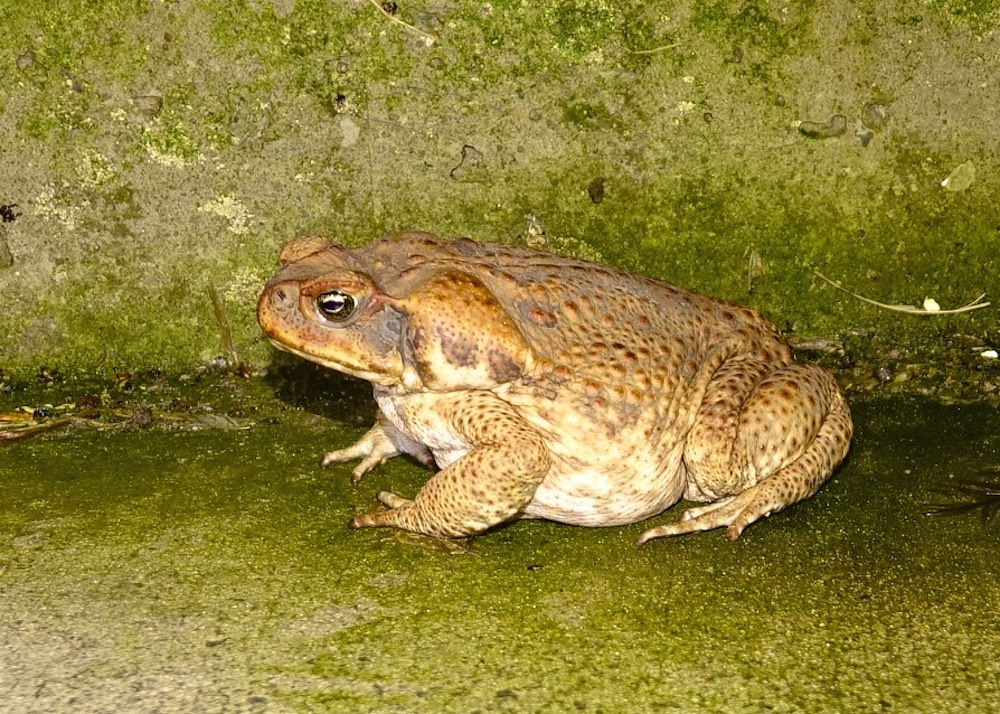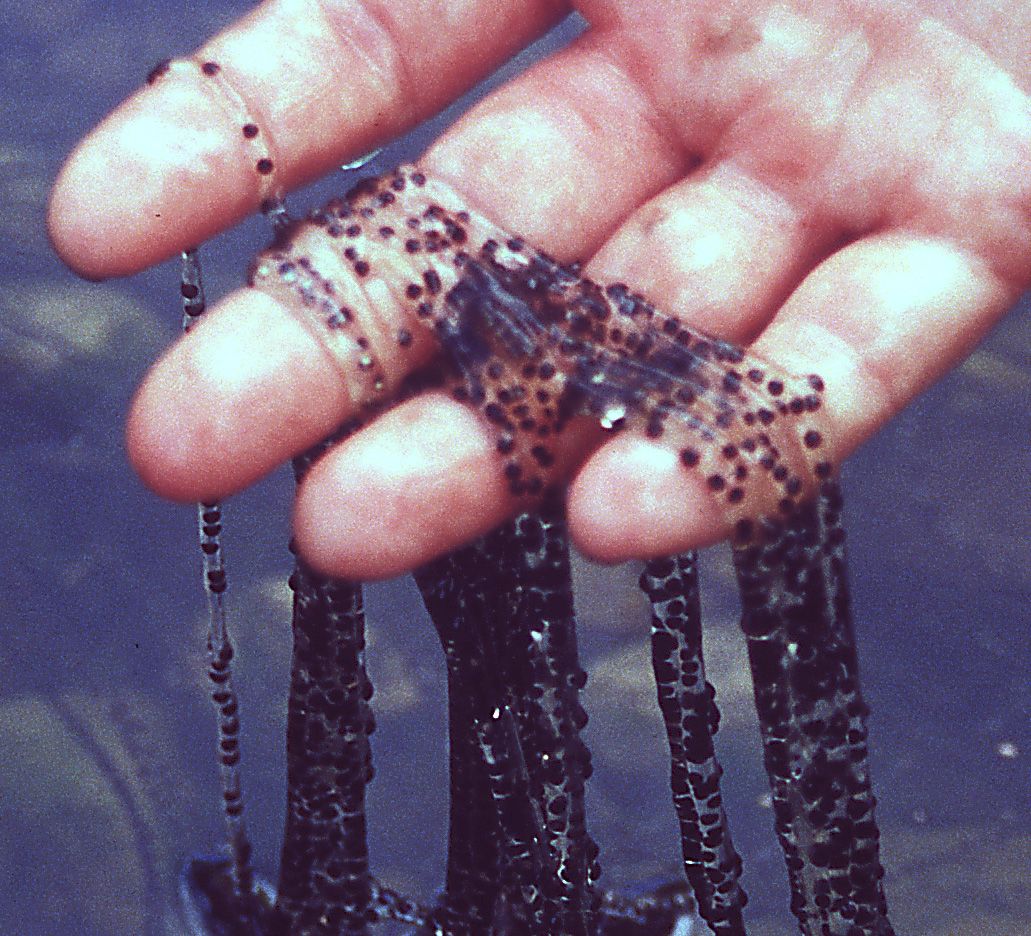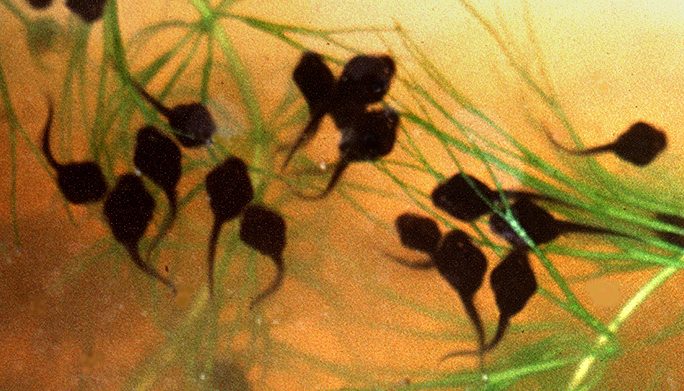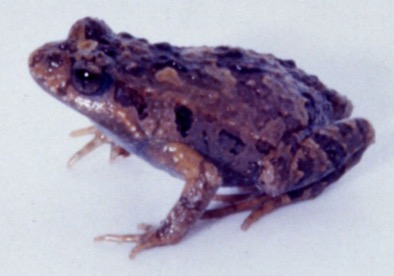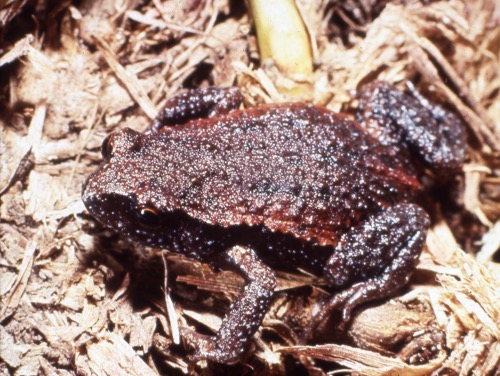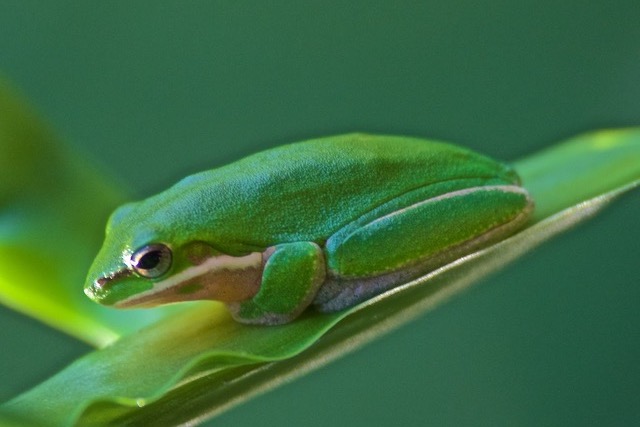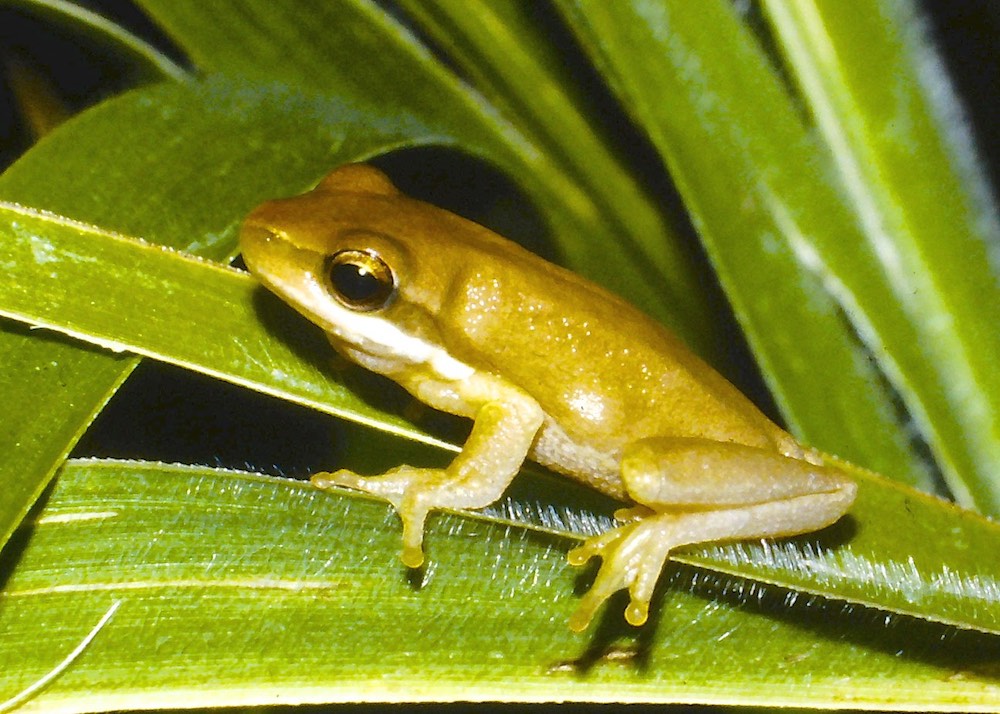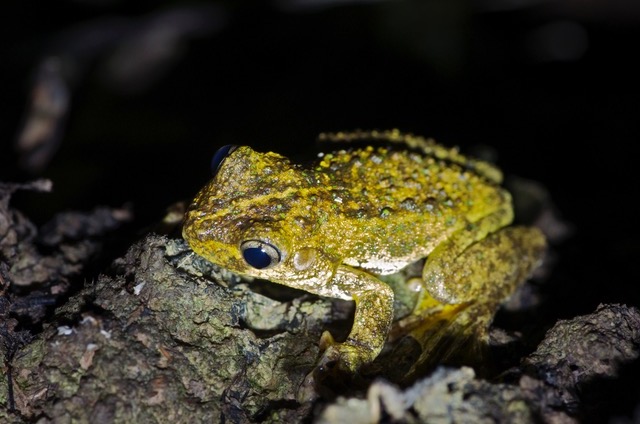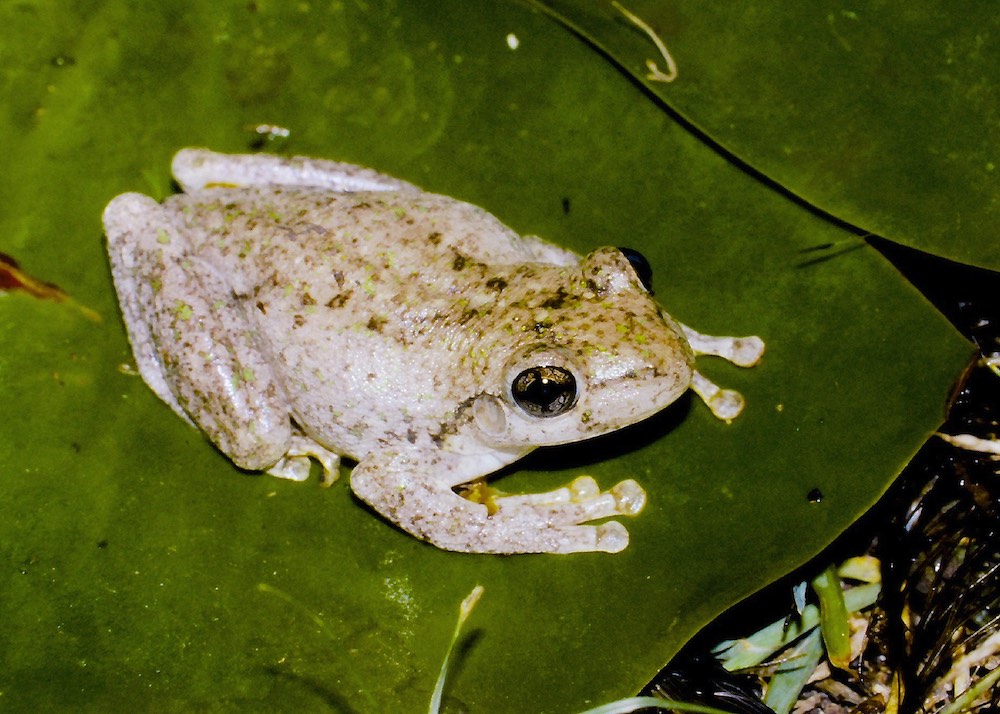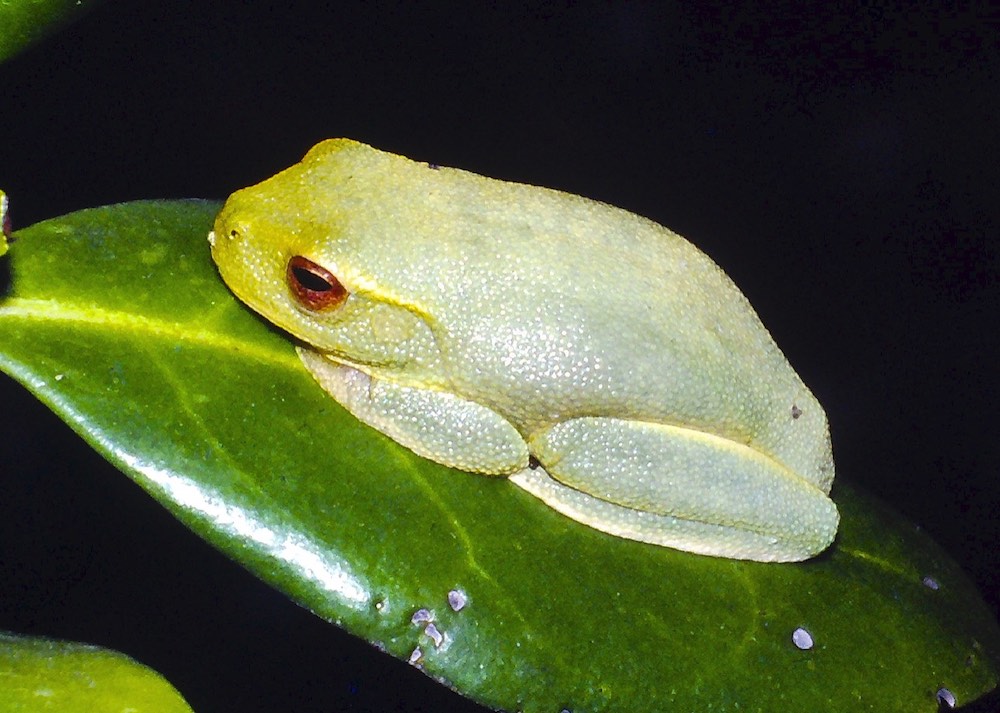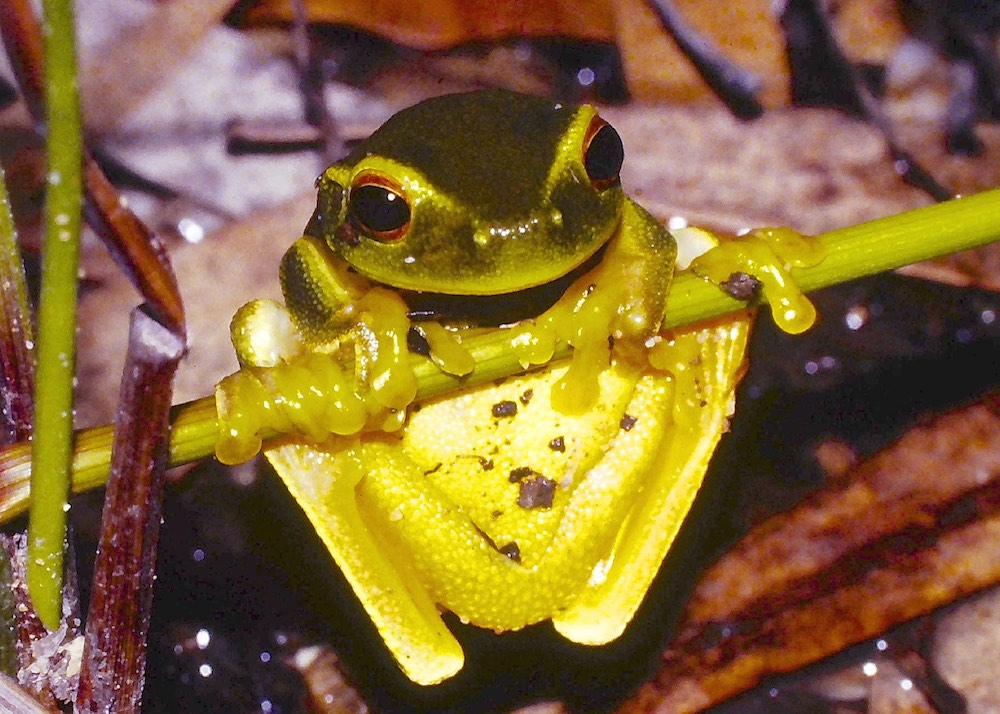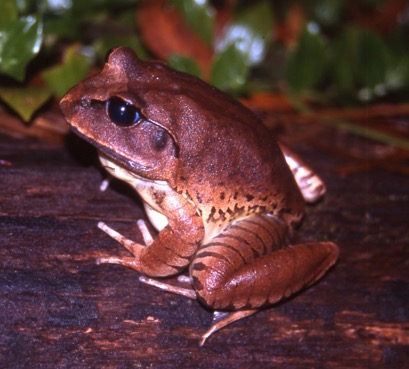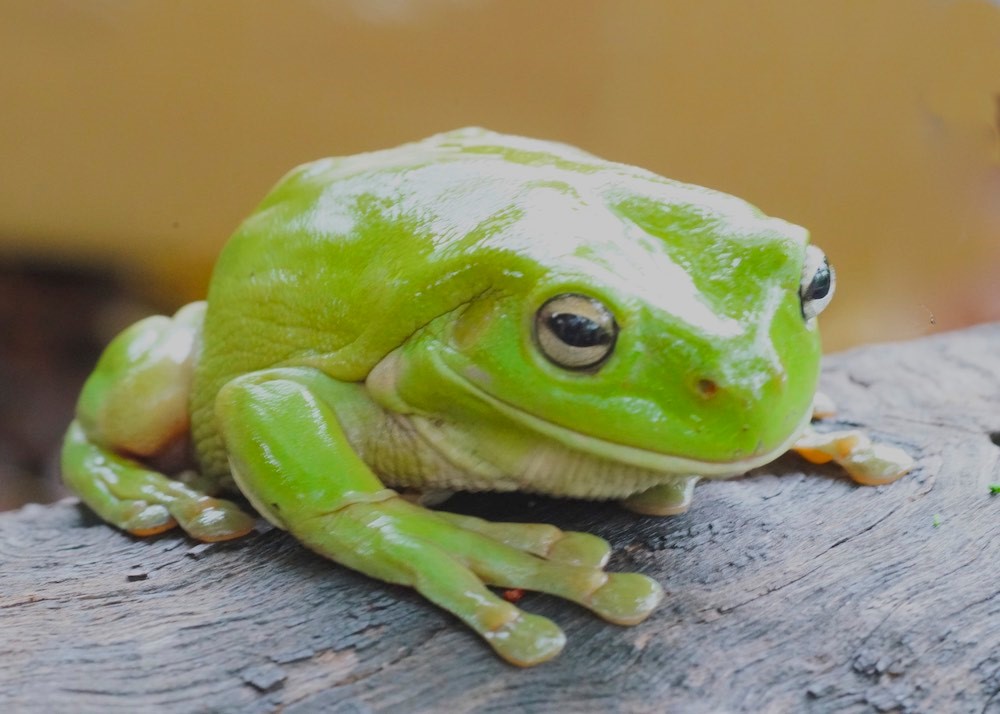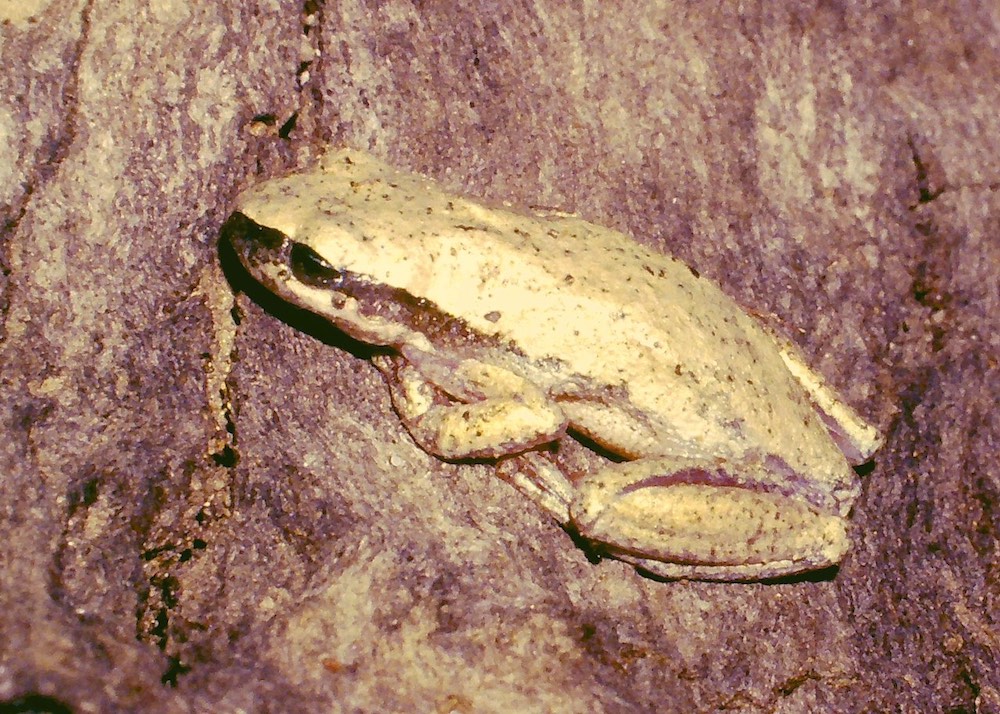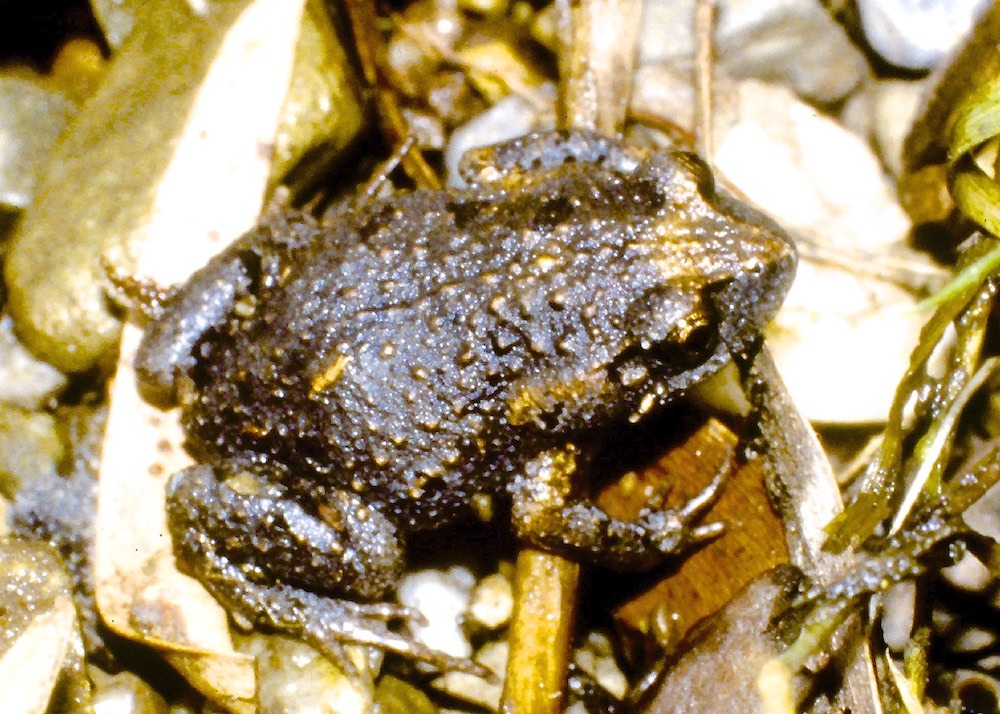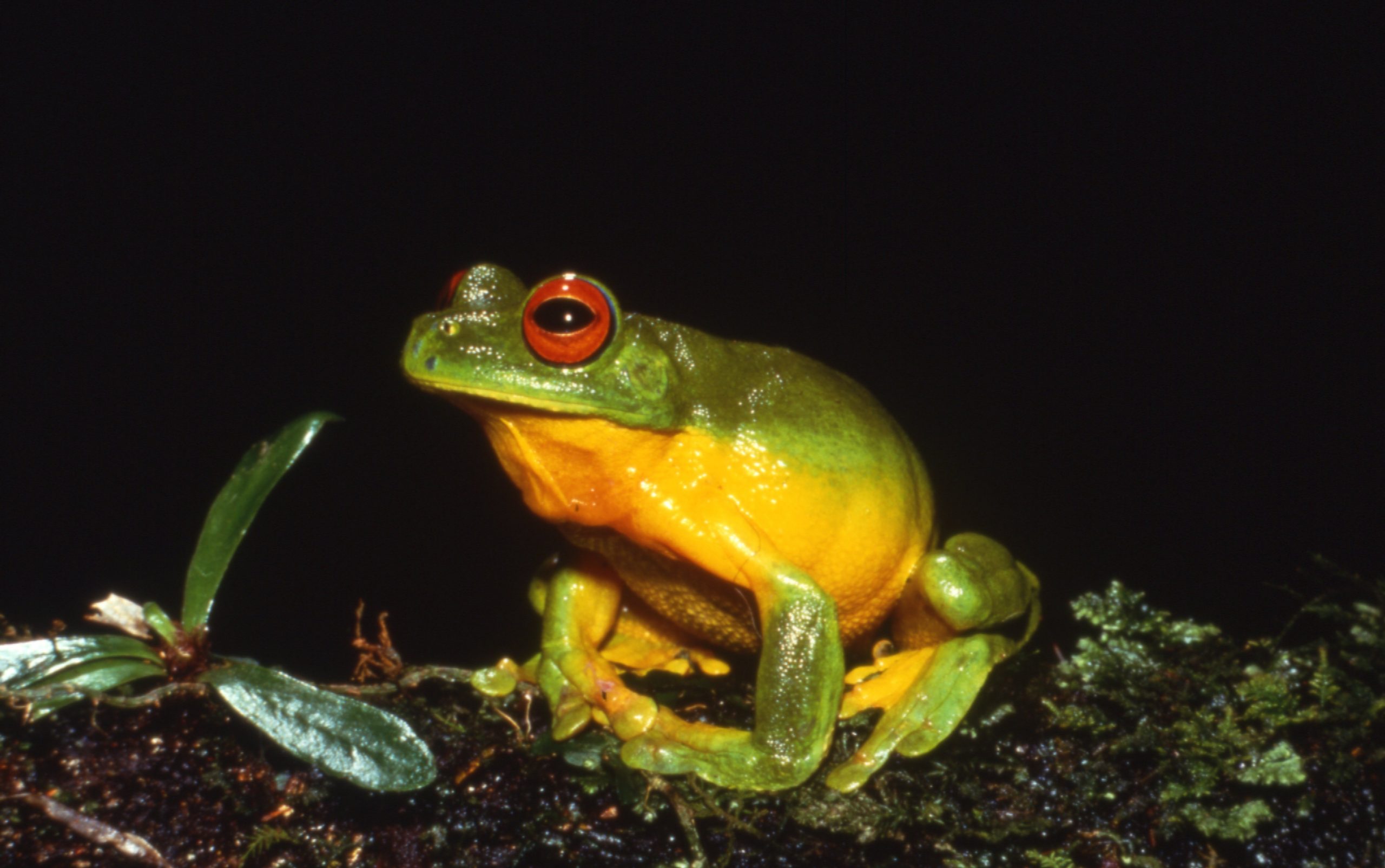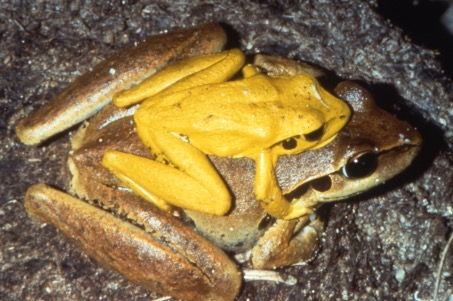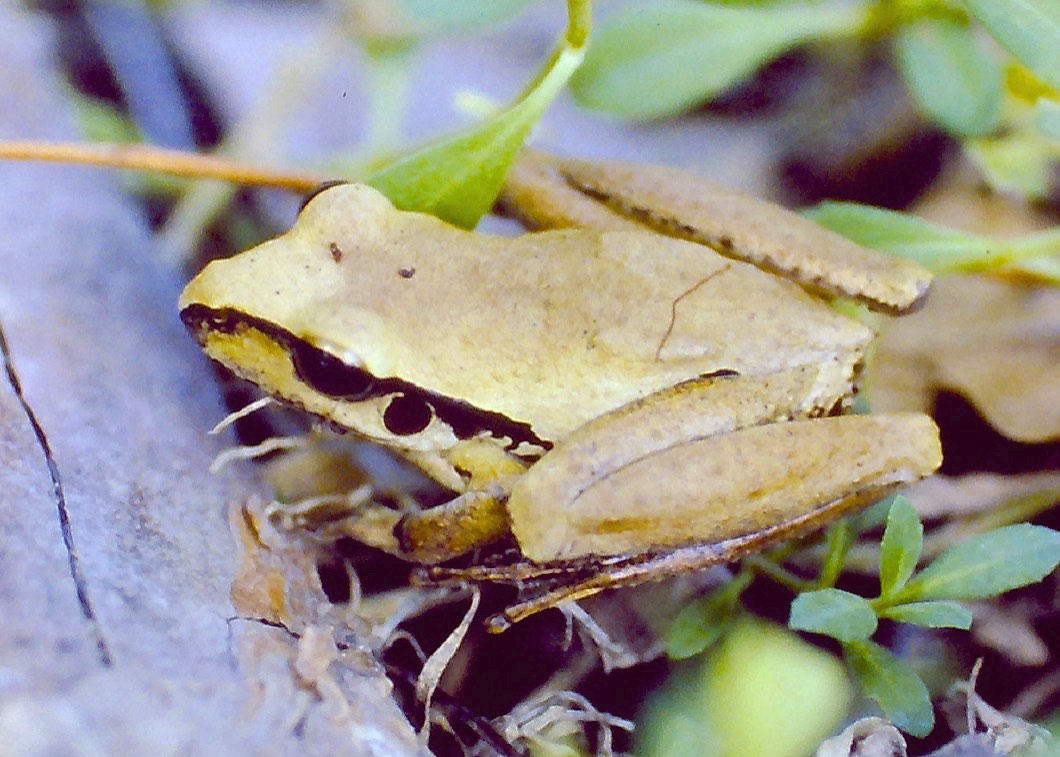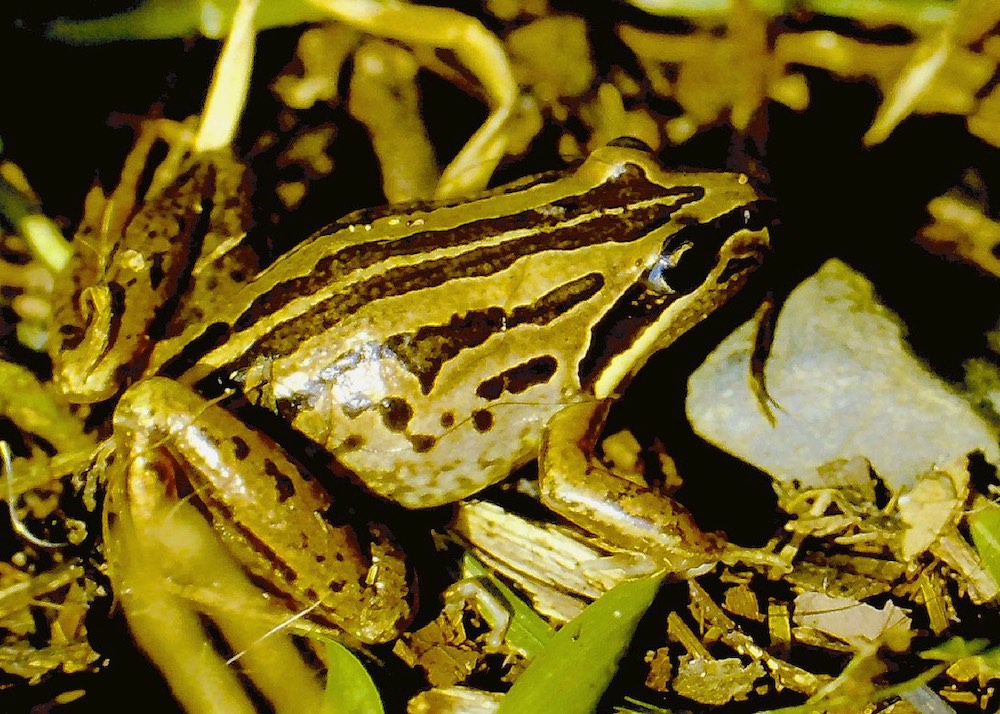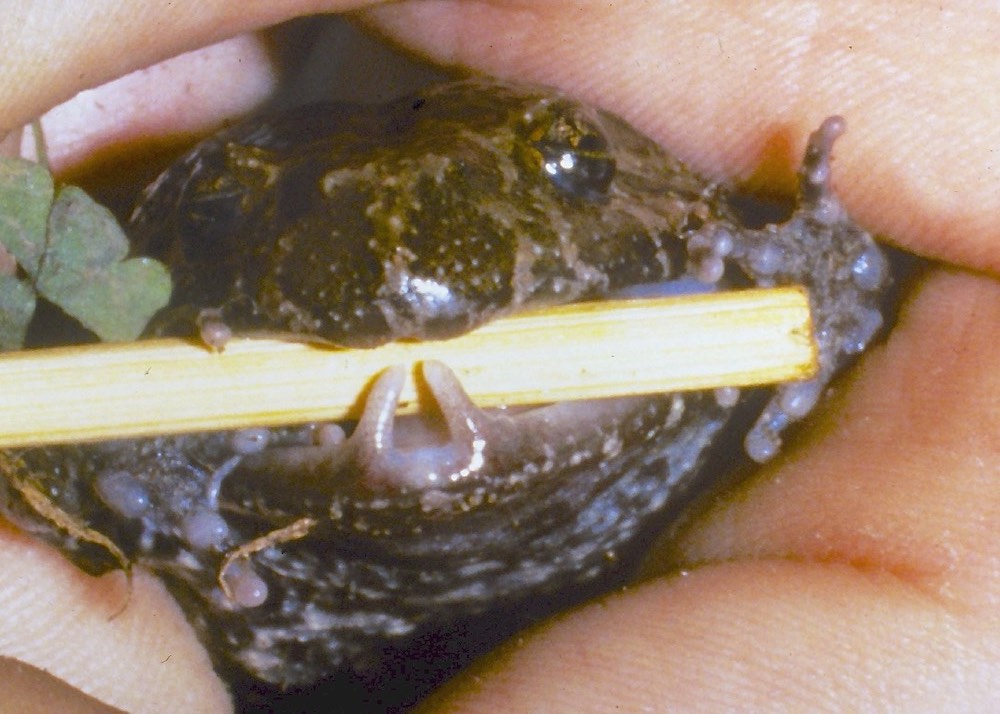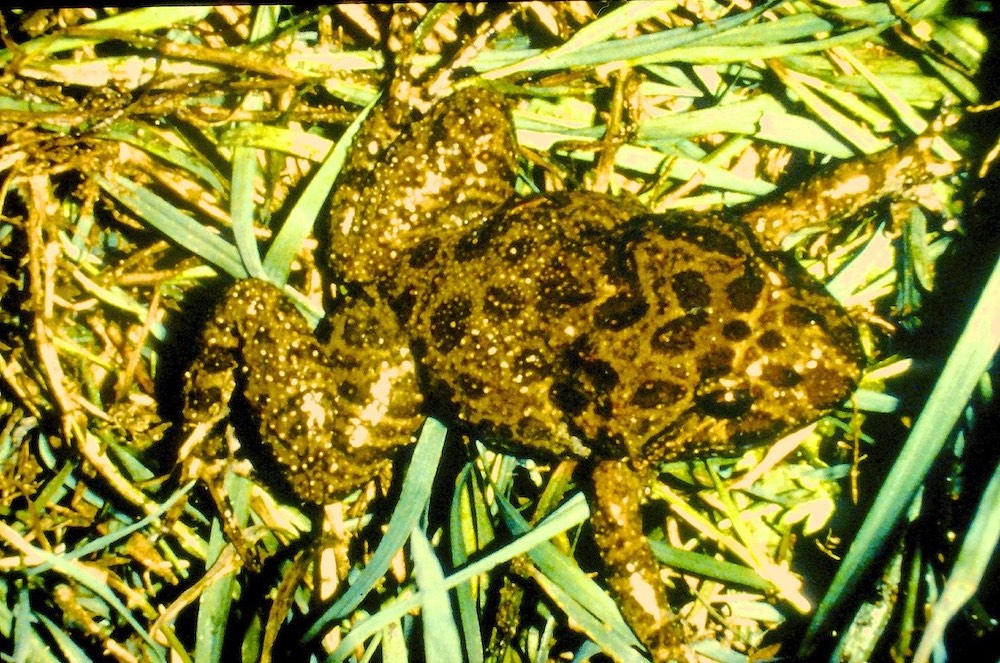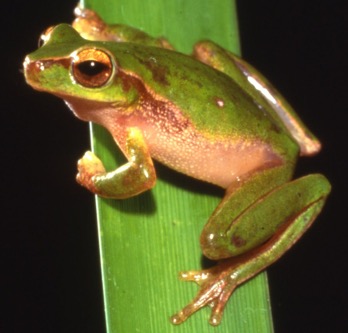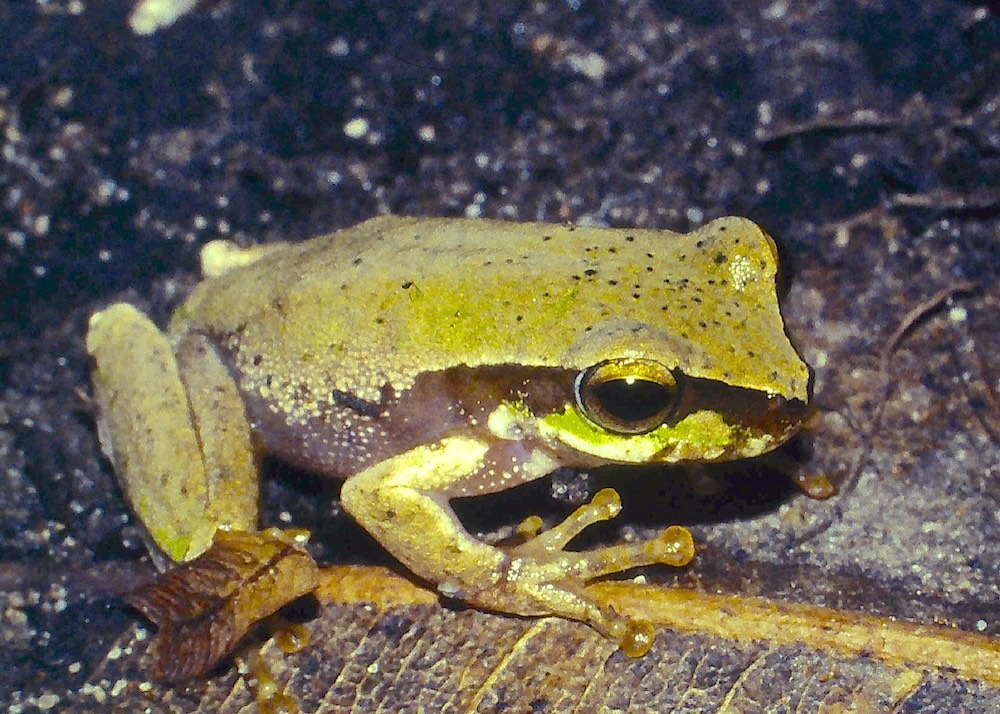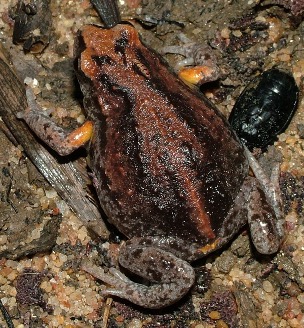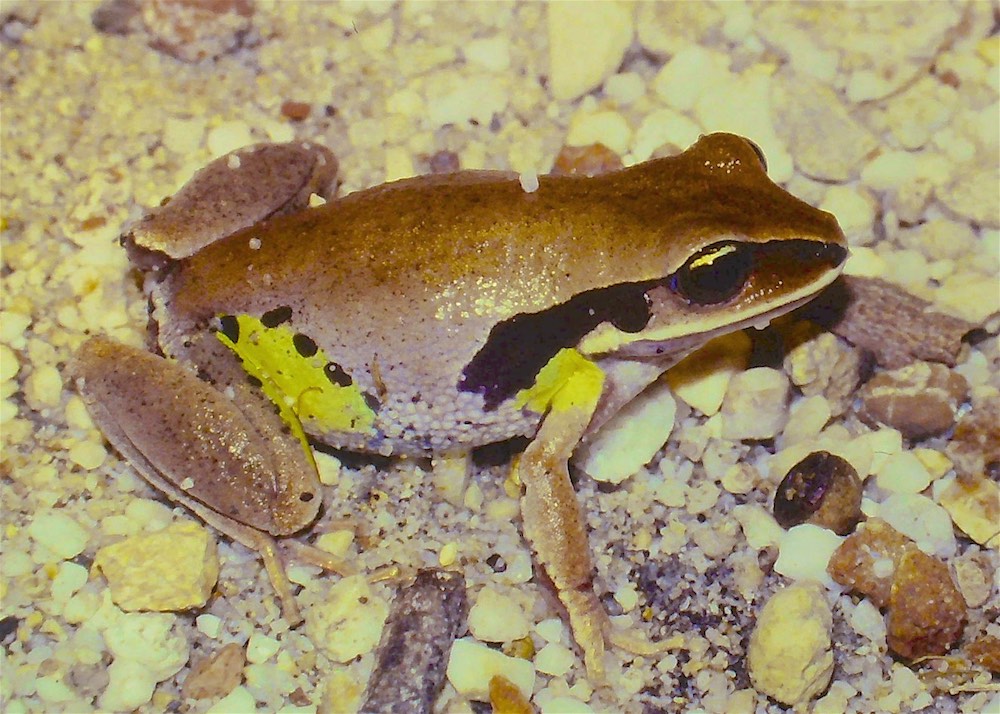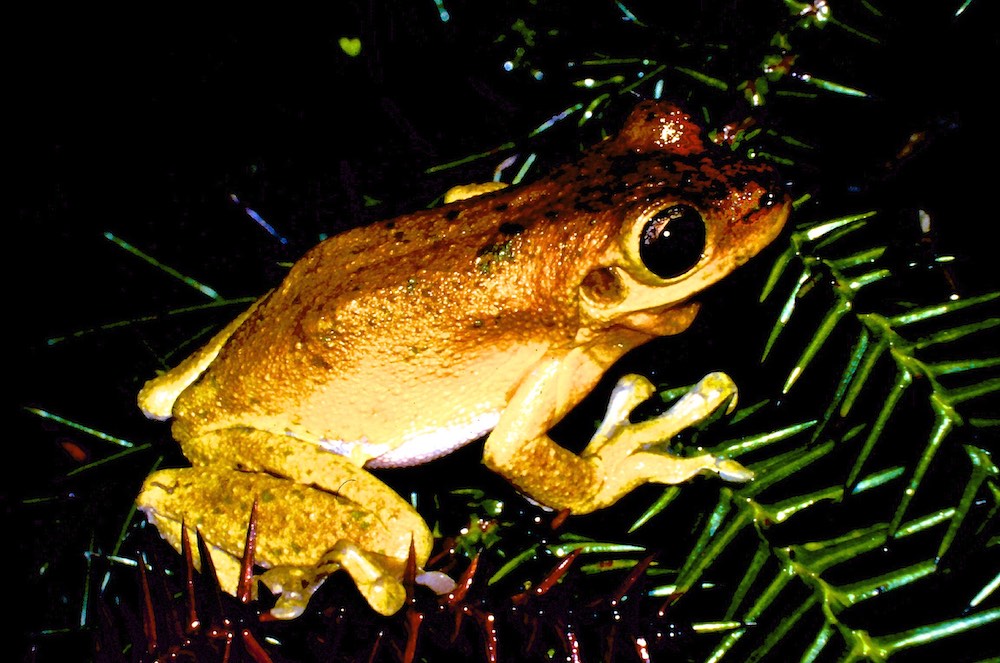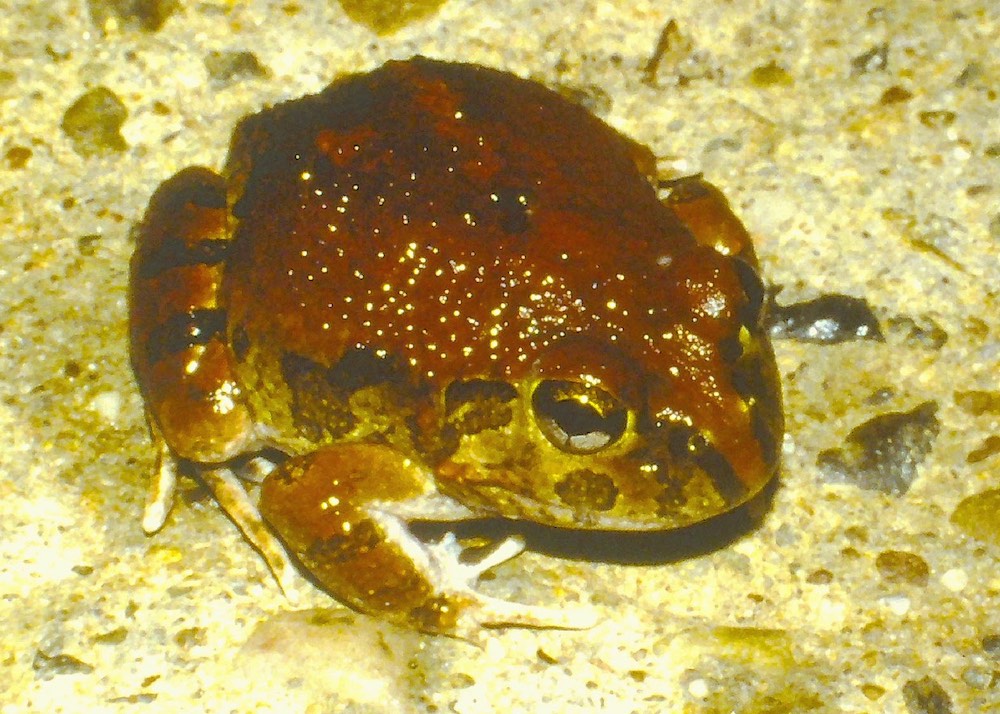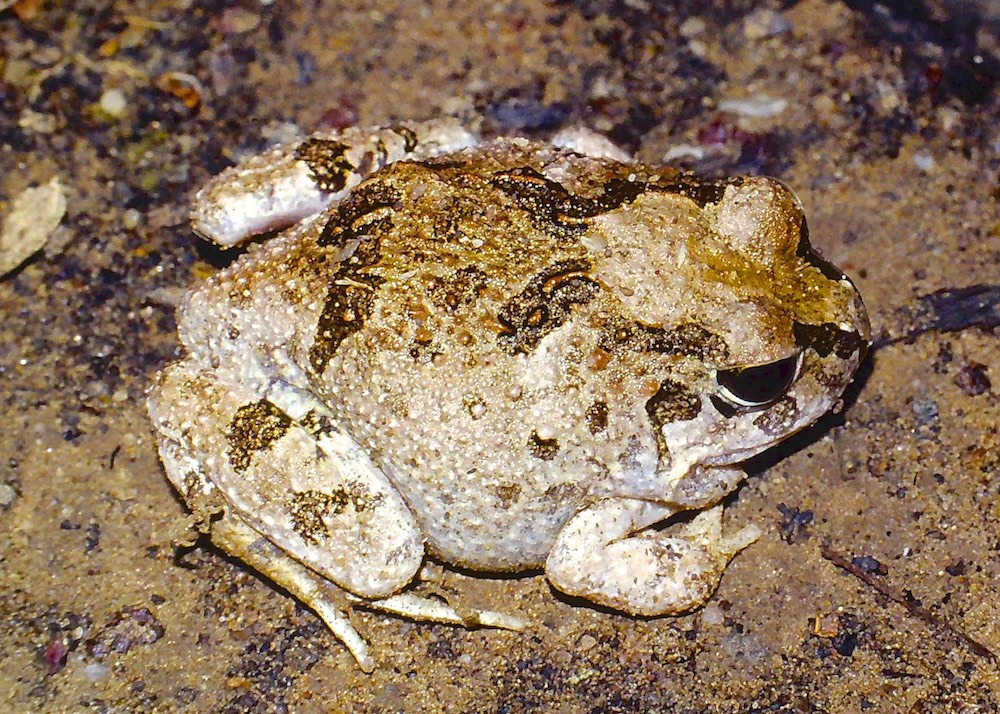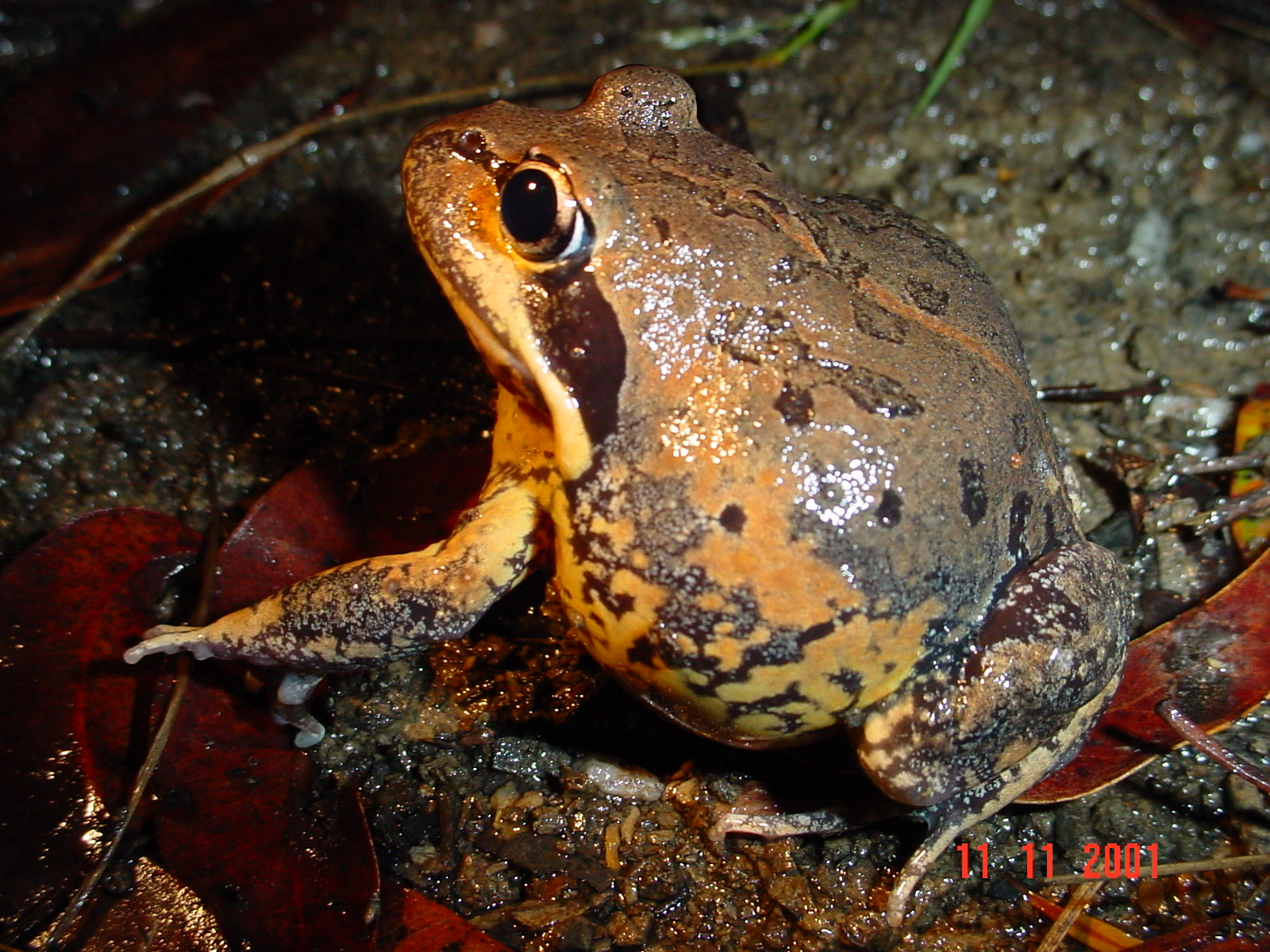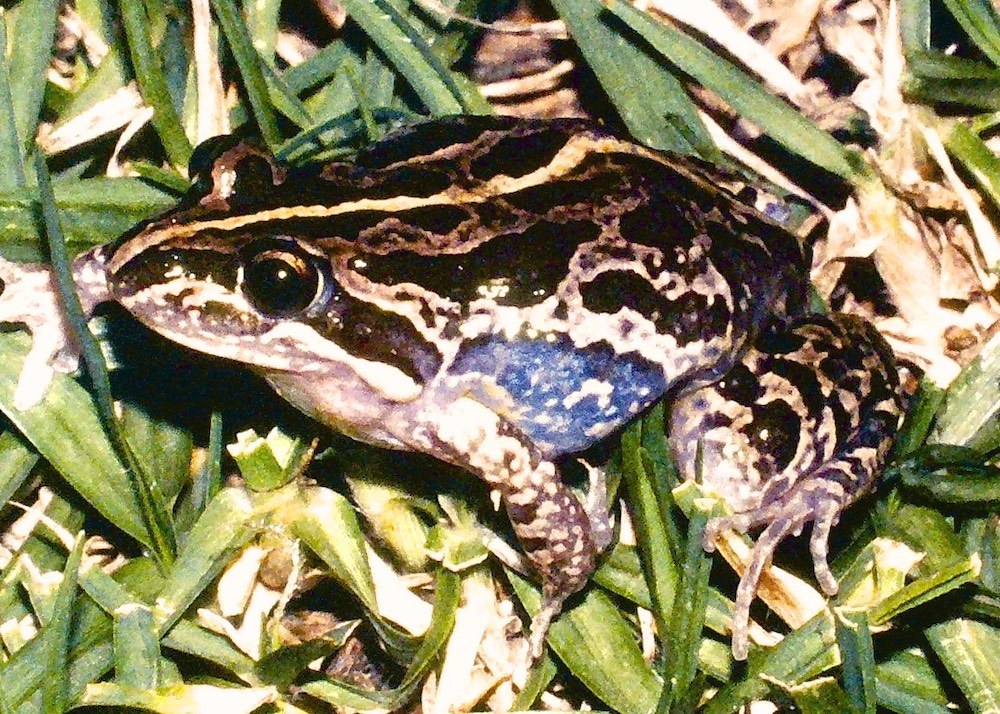Frogs in our Catchment
Frogs are found in and around creeks, dams and ephemeral ponds, where they use these areas as a refuge to forage or reproduce. Frogs will breed in either or both permanent water (creeks and/or dams) or temporary (ephemeral) water bodies. What is unknown is where they are breeding successfully. There were 17 frog species definitely known to be in the catchment, six species likely to be in the catchment and two possible species that could be in the catchment.
The Queensland Museum has specimens of Pseudophryne major (Great Brown Broodfrog) and Limnodynastes terraereginae (Scarlet-sided Pobblebonk) from the Brookfield Area, and there is a single record of Platyplectrum ornatum (Ornate Burrowing Frog) from the Brookfield area. The descriptions of frog species was taken from Lex Morley’s Frogs of Brisbane, Queensland Frog Society, 2008.
Frog species definitely in the catchment
| Adelotus brevis | Tusked Frog |
| Crinia parinsignifera | Beeping Froglet |
| Crinia signifera | Clicking Froglet |
| Limnodynastes peronii | Striped Marshfrog |
| Mixophyes fasciolatus | Great Barred Frog |
| Pseudophryne raveni | Copper-backed Broodfrog |
| Uperoleia fusca | Sandy Gungan |
| Litoria latopalmata | Broad-palmed Rocketfrog |
| Litoria caerulea | Green Treefrog |
| Litoria gracilenta | Graceful Treefrog |
| Litoria fallax | Eastern Sedgefrog |
| Litoria dentata | Bleating Treefrog |
| Litoria rubella | Naked Treefrog |
| Litoria wilcoxii (Formerly Litoria lesueuri) | Central Stony Creek Frog |
| Litoria peronii | Emerald-spotted Treefrog |
| Rhinella marina (Formerly Bufo marinus) | Cane Toad |
| Litoria chloris | Southern Orange-eyed Treefrog |
Frog species likely to occur in the catchment
| Platyplectrum ornatum (Formerly Limnodynastes ornatus) | Ornate Burrowing Frog |
| Limnodynastes tasmaniensis | Spotted Marshfrog |
| Limnodynastes terraereginae | Scarlet-sided Pobblebonk |
| Pseudophryne major | Great Brown Broodfrog |
| Litoria tyleri | Laughing Treefrog |
Frog species that could possibly be found in the catchment
| Litoria brevipalmata | Green-thighed Frog |
| Litoria pearsoniana | Cascade Treefrog |
Footnote: A historical baseline of what frog species are and possibly found in the catchment was provided by Professor Gordon Grigg (MCCG) and Dr Harry Hines (DES).
Useful links and references:
Frogs of Australia - a complete electronic field guide to Australian frogs
Hoskin, Conrad, Grigg, Gordon, Stewart, David, and McDonald, Stewart (2015). Frogs of Australia - a complete electronic field guide to Australian frogs. Australia: UQ Media.
Cane Toad Challenge: The MCCG has an Affiliate membership of the Cane Toad Challenge (CTC) by Professor Rob Paton, IMB, The University of Queensland. https://imb.uq.edu.au/canetoadchallenge
FrogID app (https://www.frogid.net.au/) also includes recordings of frog calls.
Tadpoles of South Eastern Australia. A Guide with Keys. Anstis Marion
Frog Guide
Common name, scientific name & size
Identification
Call
Similar Species
Eggs & Tadpoles
Habitat & Status
Variable colour; grey, fawn, brown, black patterned. Belly white with dark
peppering. Pale spot on base of arm. And palm smooth. Throat of male dark.
A high pitched beep. Calls in numbers after heavy rain night and day.
Clicking Froglet
11 to 12 weeks metamorphosis. About 100 eggs laid in clumps in mid-winter attached to submerged grass leaves. Small brown tadpoles with uniform colour.
Terrestrial, on floodplains, grasslands and open forests.
Status: Common.
Ranges from pale brown to pale grey. Three-lobed patch extends from nostril to eye and continues wider and paler dow the flank.
Very loud penetrating bleat. Like a one second burst of a dentist's drill
Calls after heavy summer and spring rain.
None
Small jelly clumps or single eggs floating on surface.
Dry open forest associated with permanent and temporary still waters.
Status: Common in low vegetation around water.
Dark, pointy snout with few markings on the back. Stripe from the nose broken in front of the eye by a comma shaped light mark.
A very fast quak - quak - quak. Starts slowly and increases in volume.
Stony Creek Frog females.
Floating jelly clumps laid in shallows among emergent vegetation. Tadpoles to 335mm long with a high crested tail. Body light to dark brown.
Terrestrial frog found under stones and logs. Dry forest, open woodland and
grasslands.
Status: Common.
Brown to mustard colour. Hooded eyes. Large poison glands on shoulders.
Continuous popping like a slow running motor.
Tusked Frog and Ornate Burrowing Frog.
Various habitats, but most common in man-made or modified habitats.
Status: Very Common.
Back pattern of grey, fawn, brown and white. Pale spot on base of arm and below tail.
Calls all year round. "Crick ick - crick ick"
like a watch being wound up.
Beeping Froglet
7 weeks from eggs to adult. Up to 150 eggs laid as singles or small clumps in shallow water attached to submerged objects. Small brown tadpoles with uniform colour.
Hides under logs and in grass tussocks close to water or seepage.
Status: Common outside urban areas.
A uniform coppery red back with a smooth to slightly granular texture. Lacks the yellow vent patch in the Great Brown Broodfrog.
A long "eaak" before or after rain.
Great Brown Broodfrog (found in the same vicinity).
Eggs are large and yolky, laid on ground under litter. Males guard eggs until washed into streams by heavy rain. Tadpoles brown with mottled tails.
Under grass clumps or litter near water soaks or permanent water in dry gum
forest, open woodland and grassy areas.
Status: Reasonably common in non-urban areas.
Green, pale brown, or green sides with pale brown back. White stripe from jaw to shoulder. Dark stripe from nostril through eye. Brown tympanum.
"Reek" or 'reek pip pip". Calls from reeds or lily pads with low surrounding
vegetation.
Cascade Treefrog
Up to 300 eggs laid in clumps of about 35 eggs. Metamorphosis a minimum of 120 days from January to March. Tadpole white underneath with grey markings on pointed tail.
Edge of permanent waters and slow flowing streams.
Status: Very common.
Almost white to dark brown, rough, mottled skin. "+" shaped pupil; numerous small iridescent green spots, black and yellow in the groin.
A very loud, rapid rattle that descends in tone towards the end.
Laughing Treefrog
Lightly pigmented eggs laid as singles or small groups on surface among vegetation. Tadpoles greenish-yellow with dark black stripes to 44mm long. Raised crested tail fins and large jaws. Tend to hang at 45 degrees in the water.
Rainforest edge. Wet and dry gum forest and open woodland. Hides in tree hollows and under peeling bark.
Status: Uncommon in our area.
Lettuce green. Finely granular, yellow belly. Green shield on forearm. No green on upper arm. Orange eye retracted at rest and all yellow marking concealed.
"waaaaaa" A long drawn out call.
Southern Orange-eyed Treefrog
Eggs are laid in clusters near surface of temporary swamps, flooded grasslands and ponds. Tadpoles reach 45mm, are brown. They remain in bottom of water and take two months to develop into frogs.
All habitats with trees. A high tree climber only descends with rain. Found hiding in banana fronds. Breeds in backyard pools.
Status: Abundant.
Brown, flattened head. Very dark eyes. Narrow black bars with triangular ends on legs and webbed foot.
A single loud "wark" during spring and summer rains.
None in local area
Enormous tadpoles. Female lays jelly mass of eggs she plasters to the undersides of rocks with her feet. Tadpoles are washed into creeks by flooding rain.
Rainforest and wet and dry gum.
Status: Common in mountain streams and gullies.
Large green and khaki brown with some small white spots. Padded shoulders
and white belly.
A resonant far carrying deep "crawk - crawk - crawk"
None
6 weeks, up to 2000 eggs in a clump. Tadpoles are dark green, waisted, ranging from 45 to 100mm.
Prefers edge zones between dry gum and grasslands. Adapts to urban areas, hides in downpipes, toilet bowls and storm water drains.
Status: Common.
Whitish-grey to purple-brown. Dark sides. No obvious pattern on back.
A loud rising "kreeeeee"
Bleating Treefrog
Golden eggs that float on surface. Tadpoles pale brown and develop in as little as 3 weeks.
Found anywhere but not in rainforest.
Status: Very rare in local area.
Brown with dark patches on head. Prominent gland on shoulder with no dark border above. Yellow to red patch in groin and behind knee. No gland on flank.
A one second "e-e-e-e-k"
None
Small eggs laid singly or in small clumps at water edge attached to plants.
Hides in grass clumps or under leaf litter in dry gum forest with tussock grass
slopes. Also open woodland, grassy slopes and grassy plains.
Status: Exists in good numbers on slopes of Mt Coot-tha.
Green back with yellow belly and green on upper side of upper and lower arm.
Eye orange to red.
A very loud ascending call that carries a fair distance; "arc-aarc-aaarc", often
followed by a bubbling trill.
None
Small black eggs in a jelly mat. Single or small clump attached to debris or vegetation aside from the main flow.
Mostly in high canopy of tall wet gums in highland rainforest. Extends into edge of dry open forest.
Status: Common.
Female large grey to brown, smooth with an unbroken dark stripe from the nostril through the eye. Above dark tympanum and onto the shoulder. Male smaller grey to dark brown with yellow tinge to totally yellow when breeding.
A very soft gurgling trill. Males call from rocks in the stream.
Broad Palmed Rocket Frog
Eggs laid on creek bed shallows in slowly running streams. Tadpoles dark grey with low tail fin to 45mm.
All riparian zones that border rocky, flowing streams.
Status: Locally common.
Brown with dark stripes a pointed nose and very long toes.
A loud "tok" which sounds like a tennis ball being struck. Calls any time of the
year.
None
Metamorphosis can take up to 12 months. Lays a foam nest with up to 1000 dark brown eggs among vegetation at the water edge. Globular tadpoles vary from light brown to almost black.
Found under leaf litter and logs near permanent still water. A hardy species that has benefitted from backyard ponds.
Status: Brisbane's most common frog.
Dark, boof-headed with light butterfly shaped mark on top of head. Boldly marbled belly. Red-orange in groin and back of lower leg. Two tusks on lower jaw.
A single light toned click. Calls in the water hidden in dense vegetation.
None
70 days to metamorphose. Up to 270 colourless eggs in small floating nest at water edge.
Rainforest, wet gum, open woodland and grassland streams and ponds. Will use backyard frog ponds with clean water and plenty of hiding places.
Status: Vulnerable
Frog Species likely or possibly occuring in the Catchment area (If you find any of these species please contact Phil Bird [email protected] )
Green to greenish brown with a gold stripe from nostril through the eye.
"Reeek kick kick"
Eastern Sedgefrog
Up to 730 eggs attached to rocks or debris.
Mountain rainforest and wet gum with flowing streams.
Status: Rare.
Russet-brown with fine dark marks or dark brown with central red-brown band from snout, becoming yellow at rump. Yellow upper forearms. If disturbed may adopt a defensive attitude with hands over eyes and back arched.
A short rasping "eek".
Copper-backed Broodfrog
The male develops a small damp nest under debris and calls to encourage
females to lay in his nest. Tadpoles develop in the eggs and remain dormant until rains wash them into the floodwater.
Open slope watersheds of dry gum forest.
Status: Likely to be found in our Catchment.
Brown with whiteline along upper lip. A black band from eye to shoulder. Groin and armpits are lime green with black markings.
A series of low "quack - quack - quack"
None
Small eggs in loose clumps laid in shallow temporary waters. Tadpoles
dark brown to black.
Not really known but tends to be found in dry, eucalypt forest.
Status: Rare
White to brown with rough bark-like texture. May have a few iridescent green spots. Pale yellow and black in groin.
A series of "ack - ack - ack - ack - acks."
Emerald-spotted Treefrog is very similar. Pupil is not "+ " shaped and colour of thighs and groin not as intense.
Eggs laid as singles or small groups on water surface and among emergent vegetation. Tadpoles green with large jaws and crested tails.
Hides in hollows and behind peeling bark in wet and dry gum forests, open woodlands with permanent water and swamps with dense emergent vegetation.
Status: Most likely in Catchment.
Very round frog with eyes high on head. Vertical bars on upper lip. Varies from
grey with intricate pattern to rusty red with some pattern on sides.
A short nasal "unk"
None
A small foam nest of up to 1600 eggs laid among vegetation in temporary waters after heavy rain. Small dark tadpoles with a mottled tail with prominent eyes high on the head. Metamorphosis is less than three weeks.
Does not cope well with urbanisation. Needs suitable soil for burrowing.
Status: Single record in our area.
Large, round , dark with yellow belly and yellow gland from under arm to arm. It has a lump below the knees and may have red on sides.
A single loud "bonk", like a banjo string being plucked.
None
A large floating nest frequently laid in deeper areas of the pool.
Not tolerant of urbanisation. Dry gum, open woodlands, alluvial flats and areas
around large pools.
Status: Most likely to be found in our area.
Grey brown with darker spots. May have a central stripe. Dark through the eye with a whitish stripe below it.
Like a machine gun - a series of harsh rapid "uke".
None
A small frothy mass of pale eggs up to 1350 laid in vegetation at waters edge. Tadpoles black turning brown as they mature. Tadpole cycle takes from three to five months.
Doesn't compete well with Striped Marsh Frog. Open woodlands and grassy flats subject to periodic flooding.
Status: Most likely to be found in catchment.

